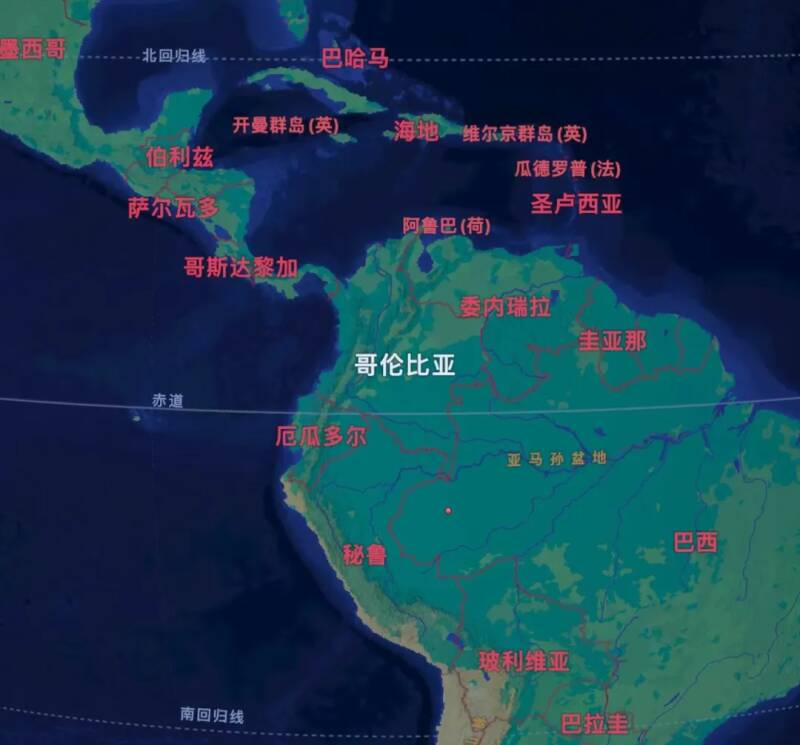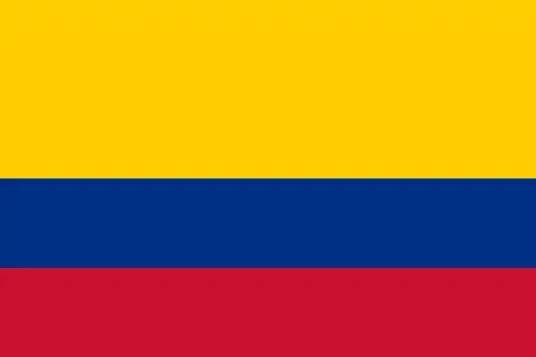Colombia| Introduction to the coffee producing area selection series of coffee beans
Columbia Colombia
In South America, there is a country rich in natural resources with the world-famous "four treasures", coffee, flowers, gold and emeralds. This country is known as the "land of gold" and the third largest coffee producer in the world, Colombia (Rephost blica de Colombia).

Colombia, located in the north of South America, is a land and sea preparation country, connected with Venezuela, Brazil, Ecuador, Peru and Panama, bordering the Pacific Ocean in the west and the Caribbean Sea in the north, with a land area of 114000 square kilometers. it is the third largest country in Latin America, the country is rich in natural resources, and the forest area accounts for 51.9% of the land area. The main mineral deposits are emerald, oil, natural gas, coal, gold and so on, of which emerald reserves are the first in the world.
From top to bottom, the Colombian national flag is made up of three parallel rectangles of yellow, blue and red, with the yellow part accounting for half of the flag, while blue and red each occupy the first half of the flag, where yellow represents the richness and wealth of the soil, but also represents sovereignty, harmony and justice, blue represents the sea, and red represents blood, meaning love, strength and progress.

The topography of Colombia is roughly divided into western mountain areas and eastern plains, with many coastal plains in the east, Orinoco and Amazon plains in the east, and Columbus, the highest peak in the country, with an elevation of 5800 meters above sea level in the north. the Andes have peaks in Colombia, the eastern, central and western Cordillera Mountains, with an average elevation of more than 3000 meters, stretching 800km, and with a number of volcanoes and rivers.
Colombia is located in the tropics, and its climate varies according to its topography. It belongs to the tropical rain forest climate in the eastern plain and the Pacific coastal areas, while the mountains with an elevation of 1000-2000 meters belong to the subtropical climate, and the northwest belongs to the savanna climate. There is only dry season and rainy season in a year, with an average annual rainfall of 11000 mm and an annual temperature of 25-30 ℃.
Coffee producing area
Colombia has a relatively large land area and developed agriculture, so Colombia has many coffee growing areas, and because of the mountain topography, different microclimate and other planting conditions, the taste of coffee grown in each region has many differences. and there are two production seasons in a year, the main season is from October to January and the secondary season is from April to July. At present, the more famous producing areas in Colombia are Antioquia, Sattainder, Huila, Narino, Cauca and so on.
Antioquia (Antioquia): Antioquia is the birthplace of Colombian coffee, an important coffee producing area and the largest coffee growing area, with small producers as well as large estates. The producing area is located in northwestern Colombia. Antioquia accounts for 7 per cent of Colombia's total coffee production, with a planting area of more than 18000 hectares and 9800 families involved in the production process.
Santander (Sattainder): the Santander region is located in northern Colombia, in the Andes, and is planted at an altitude of about 1400-1700 meters. Santander is a very important but rarely mentioned province, but it was actually the first province in Colombia to grow coffee. At present, Santander accounts for 5% of Colombia's coffee production, but most of the coffee varieties planted in this area are Kaddura, Castillo and so on, many of which are leaf rust-resistant varieties. This also makes Santander an endemic area of low leaf rust in Colombia and around the world.
Na Linglong (Narino): located in the southwest of the country, facing the Pacific Ocean to the west and Ecuador (Ecuador) to the south, the Andes Mountains run through the province, and coffee is grown on volcanic soil at an altitude of 1600-2300 meters. There are magnificent mountains and many rivers flow south through this area. The alpine coffee growing area of Colombia has given birth to many small farmers of fine coffee. The total annual output of that Linglong province is about 150000 bags.
Cauca: Cauca Province is the Colombian coffee origin certification area, with an average elevation of 1758 meters. The temperature difference in this area is relatively large, with an average temperature of 11 ℃ at night, while the average temperature during the day is 18 ℃. The low temperature at night and the relatively higher altitude slow down the growth of coffee, so that coffee beans can more fully absorb the nutrients of coffee fruits, and also create better acidity and sweetness of coffee in Cauca producing areas.
Huila: located in southern Colombia and the southern part of the Central Mountains, Huilan Province consists of the central and eastern mountains of the Andes, mostly in the Magdalena Valley. It is Colombia's most famous boutique coffee producing area, with more than 70, 000 coffee farmers and planting areas of more than 16000 hectares. This area is a hilly land surrounded by mountains, and coffee is planted at an altitude of 1200-1800 meters. High altitude, volcanic soil, rich water resources and unique climate make the coffee produced in this area pure, balanced and soft. Qianjie has many kinds of coffee beans from this producing area, and the well-known dividing line manor comes from this producing area.
Qianjie Coffee Colombia selected Coffee Bean production area: Huilan Coffee Bean production area: altitude: 1500-1800 m Variety: Kaddura treatment: washing Flavor: dark Chocolate Nuts Caramel slightly Fruit Acid
This entry-level selection of Qianjie Coffee Colombian beans are from the Huilan producing area and are washed and moderately roasted. The front street uses the proportion of V60JEL 15, and the water temperature is 92 ℃. The entrance will have nutty, dark chocolate and caramel flavors, slightly sour and sweet tropical fruits, soft and well-balanced.
Important Notice :
前街咖啡 FrontStreet Coffee has moved to new addredd:
FrontStreet Coffee Address: 315,Donghua East Road,GuangZhou
Tel:020 38364473
- Prev

How to adjust the strength of coffee? In addition to the ratio of powder to water, what parameters should I pay attention to when making coffee by hand?
Everyone's tastes are different, and their favorite coffee concentration is also different. Therefore, in order to make the coffee more suitable for your taste, everyone will adjust the concentration of the coffee according to their own preferences. When making coffee in hand, the most convenient way to adjust the flavor is to change the ratio of powder and water! If you want it stronger,
- Next

Rising again! Robusta coffee futures prices are close to the $4000 mark
Earlier, Arabica coffee bean and Robusta coffee bean futures prices ushered in gains. Among them, Arabica coffee bean futures prices climbed 12.5% to their highest point since nearly October 2022. However, coffee prices started to fall slightly in the past few days, but have risen again in recent days. Arabica coffee
Related
- Customers have "changed" Manner's new products! Shop assistant: Please don't mess around!
- Remove sockets in customer areas at Starbucks stores?! Netizen: I won't go if I really tear it down
- What is the difference between the taste steps of sun-dried coffee and washed coffee? Why is sun-cured coffee sweeter and washed coffee sour?
- The recipe for salty grapefruit dirty is revealed! Coffee Festival salty grapefruit dirty coffee making materials parameters ratio milk share!
- How about the flavor of Sunlight 74158 at Sidamo Banshaha Mathieu Processing Factory in Ethiopia? 74158 Share the proportion of coffee brewing parameters!
- What effect does Italian American coffee with filter paper have? Will coffee taste better if it is put on filter paper at the bottom of the powder bowl?
- What is the color difference in coffee beans? What are the characteristics of honey processed coffee beans? Why are the anaerobically treated coffee beans uneven in color?
- How does novice Xiaobai quickly get started and make coffee? Newbies learn to make coffee by hand and share the specific steps and process process!
- Costa tea has a shelf life of 100 years?! Expert: Unable to verify
- It's a huge uproar! American milk addition was rejected by Manner employees?!

